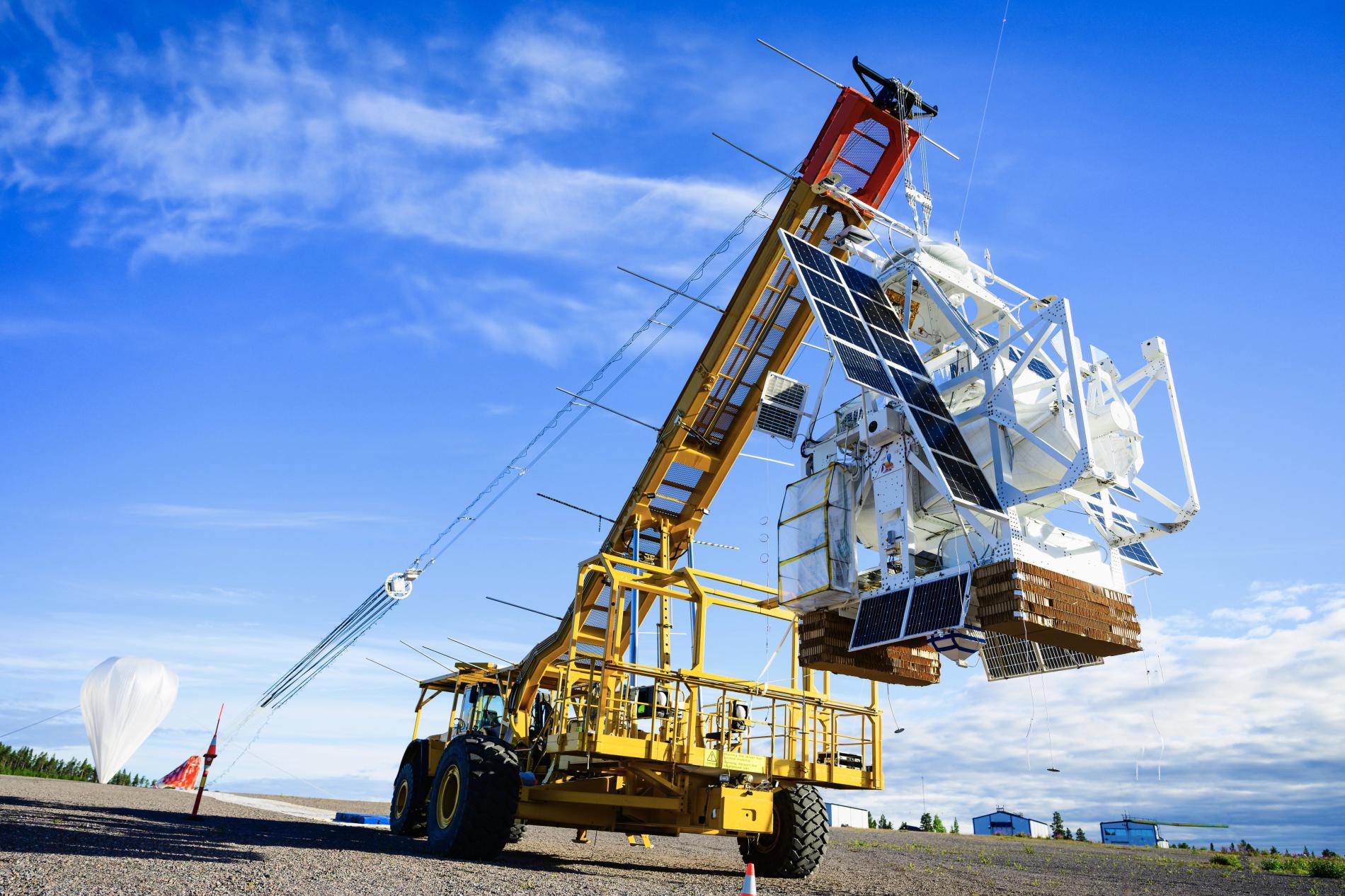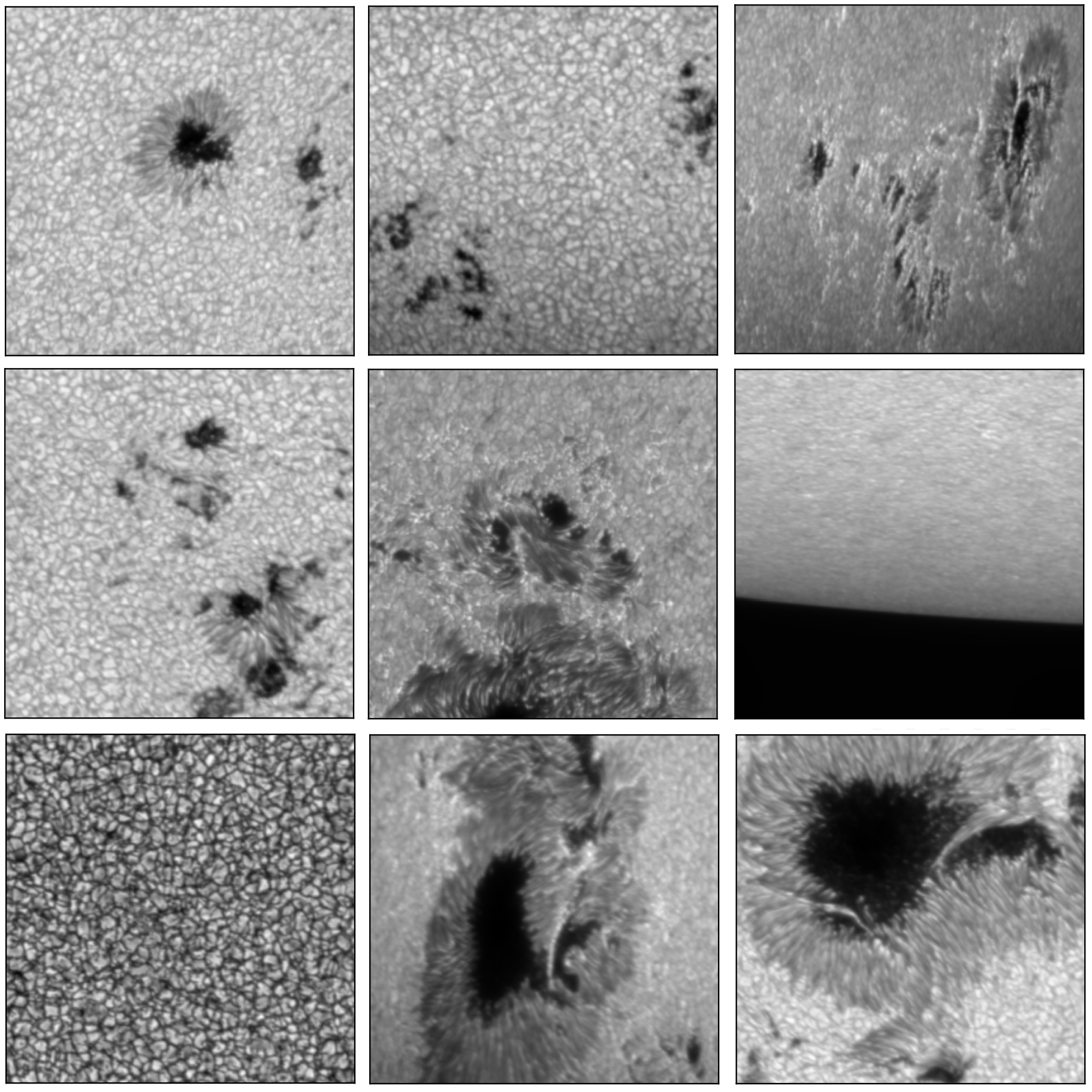The Sunrise III Mission captures unprecedented Solar data with exceptional spatial and temporal resolution
An international scientific team, with significant Spanish participation through a consortium led by the Instituto de Astrofísica de Andalucía (IAA-CSIC), has, for the first time, obtained simultaneous data from the Sun in ultraviolet, visible, and infrared light bands.
This information was gathered during the successful scientific flight of the Sunrise III mission in July 2024
Ground-based observatories currently employ a wide range of instruments to study the Sun’s surface in the visible and infrared ranges. However, combining these observations with those in the near-ultraviolet, covering wavelengths from 400 to 200 nanometers, is not possible due to atmospheric turbulence, and extended periods of uninterrupted observation are unfeasible. In this context, the Sunrise III mission “has become the first observatory to obtain spectropolarimetric data simultaneously in the near-ultraviolet, visible, and infrared light bands, with unprecedented spatial and temporal resolution,” explains Dr. David Orozco Suárez, senior researcher at the IAA-CSIC and the project’s principal investigator in Spain.
In the coming months, the scientific team will analyze the collected data to unravel new mysteries about the star that makes life on Earth possible. “A preliminary review of the data suggests the revolutionary nature of this mission, with a discovery potential that will mark a turning point in solar studies,” adds Dr. Orozco (IAA-CSIC).
To achieve this, the stratospheric Sunrise III mission, whose successful flight occurred from July 10 to 16, utilized three new instruments, one and a half of which were developed by the Spanish Space Solar Physics Consortium (S3PC). Coordinated by the Solar Physics Group of the Instituto de Astrofísica de Andalucía (IAA-CSIC), the S3PC designed and built the TuMag (Tunable Magnetograph), a visible spectropolarimeter capable of precisely measuring the Sun's magnetic field. Additionally, in collaboration with the Japanese consortium led by the National Astronomical Observatory of Japan (NAOJ) with Dr. Yukio Katsukawa as principal investigator, the S3PC contributed to the development of SCIP (Sunrise Chromospheric Infrared SpectroPolarimeter), an instrument designed to study the chromosphere, one of the upper layers of the Sun's atmosphere. The S3PC’s contributions to SCIP included its three scientific cameras, electronics, control software, and remote segment.

Sunrise III moments before the flight in July 2024. On the left, the stratospheric balloon that will transport it to the stratosphere. Sunrise III is attached to a special crane used for the launch. Credits: Mattias Forsberg, SSC, Esrange.
Other institutions comprising the Spanish consortium include the Instituto de Astrofísica de Canarias (IAC); the Instituto Nacional de Técnica Aeroespacial (INTA); the Universidad Politécnica de Madrid (UPM); and the Universidad de Valencia (UV). “This collaboration highlights the high level of Spanish technology and research in solar physics,” emphasizes Jose Carlos del Toro Iniesta, astronomer at the IAA-CSIC.
A SOLAR LABORATORY ON A BALLOON
Following the scientific relevance of its first two editions, Sunrise III has established itself as a unique mission investigating key processes in the lower solar atmosphere, such as the dynamics of magnetic fields and plasma flows. These processes are crucial for understanding solar phenomena that impact Earth's environment, such as coronal mass ejections or solar storms.
Carried aloft by a stratospheric balloon launched from Sweden and operating at an altitude of 37 kilometers, the mission’s one-meter-aperture solar telescope enabled observations free from Earth’s atmospheric distortion and access to the near-ultraviolet range.
During its six-and-a-half-day flight, Sunrise III combined the benefits of space and ground-based telescopes, featuring a reusable design that allows for improvements and optimization in future missions. After its flight, the mission landed safely west of Great Bear Lake, Canada.

3x3 mosaic of images of the solar surface captured by the TuMag instrument aboard Sunrise III. The panels show various solar features, including active regions, areas of solar calm and views of the solar limb. Credits: Pablo Santamarina (IAA-CSIC)
AN EXPANDING SCIENTIFIC LEGACY
Since its first edition in 2009, the Sunrise missions have generated significant advancements in solar physics, with over 100 scientific publications derived from its flights. Sunrise III is poised to continue this legacy, offering unprecedented insights into the stratification of the solar atmosphere, from its deepest layers to the chromosphere.
“The observations obtained during the nearly seven days of flight hold immeasurable scientific value. We are confident they will provide invaluable information to understand numerous physical phenomena we still don’t comprehend, while also revealing entirely unknown phenomena,” states the principal investigator of the S3PC-coordinated project.

Images taken continuously at three different wavelengths of the solar spectrum during the activation of a solar flare in an active region of the Sun. The sequence, recorded with TuMag on board Sunrise III, simultaneously with the SUSI and SCIP instruments, shows the complete evolution of the flare, from its beginning to its end, with one-minute cadences for TuMag and one-second cadences for SCIP and SUSI. Credits: Pablo Santamarina (IAA-CSIC)
Sunrise III is a collaboration involving the Max-Planck-Institut für Sonnensystemforschung (Max Planck Institute for Solar System Research - Germany), which leads the mission and oversees the telescope and the SUSI instrument; Johns Hopkins University’s Applied Physics Laboratory (USA), responsible for the telescope’s structure and instrument housing; the National Astronomical Observatory of Japan (NAOJ), principal institution for the SCIP instrument; the Institut für Sonnenphysik (Institute for Solar Physics - Germany), responsible for the correlation tracker used to stabilize the telescope; and the Spanish Space Solar Physics Consortium (S3PC).
This project has been funded by the AEI/MCIN/10.13039/501100011033/ in the framework of the projects RTI2018-096886-B-C5 and PID2021-125325OB-C5, and the ‘Severo Ochoa Centre of Excellence’ awards to the IAA-CSIC (SEV-2017-0709, CEX2021-001131-S), all of them co-financed by European ERDF funds, ‘A way of making Europe’.
IRIS-2: AMATEUR ASTRONOMERS’ KEY CONTRIBUTION
The Sunrise III stratospheric balloon also carried the IRIS-2 instrument, a video and imaging camera developed by a Spanish team of amateur astronomers, engineers, and technicians. Following the legacy of its predecessor, IRIS-1, which flew on Sunrise II in 2013, its primary purpose was to capture images for communication and outreach while contributing to the monitoring and enhancement of the observatory’s mechanical interfaces and control systems throughout the mission—from launch to recovery.
IRIS-2 recorded eight and a half hours of video and captured over 16,000 still images during the flight. The cameras, recording in 4K at 30 frames per second, documented key moments of the launch, landing, and balloon release. This group of passionate enthusiasts demonstrated how amateur astronomers can significantly contribute to a mission of such high scientific caliber.
The journey of the Sunrise III solar observatory by balloon, as seen by IRIS-2, which was launched on 10 July 2024 from Sweden and recovered in Canada six days later, after travelling more than 6,500 km at an altitude of about 40 km. Credit: IRIS-2 TEAM
- S3PC website: https://s3pc.es/
- TuMag (Tunable Magnetograph) website: https://s3pc.es/TuMag/
- David Orozco Suárez - orozco@iaa.es
- Instituto de Astrofísica de Andalucía (IAA-CSIC)
- Unidad de Divulgación y Comunicación
- Amanda López – alm@iaa.es
- Emilio García – garcia@iaa.es - 649 407 445 (vía whatssap)
- Celia Navas - navas@iaa.es
- https://www.iaa.csic.es
- https://divulgacion.iaa.csic.es

